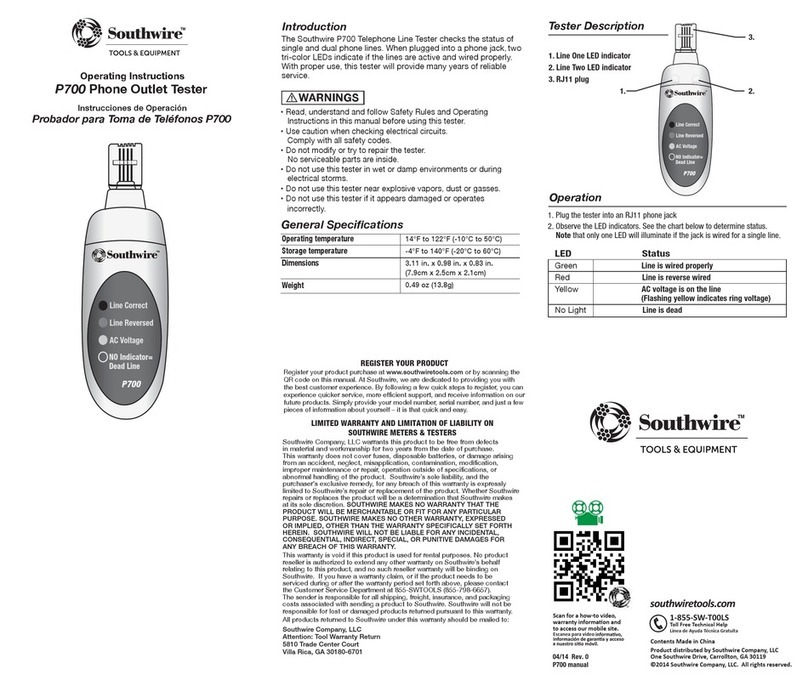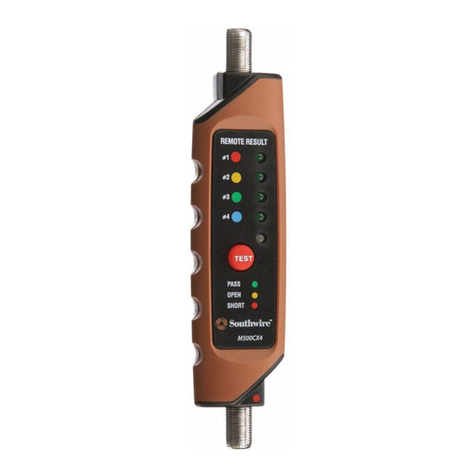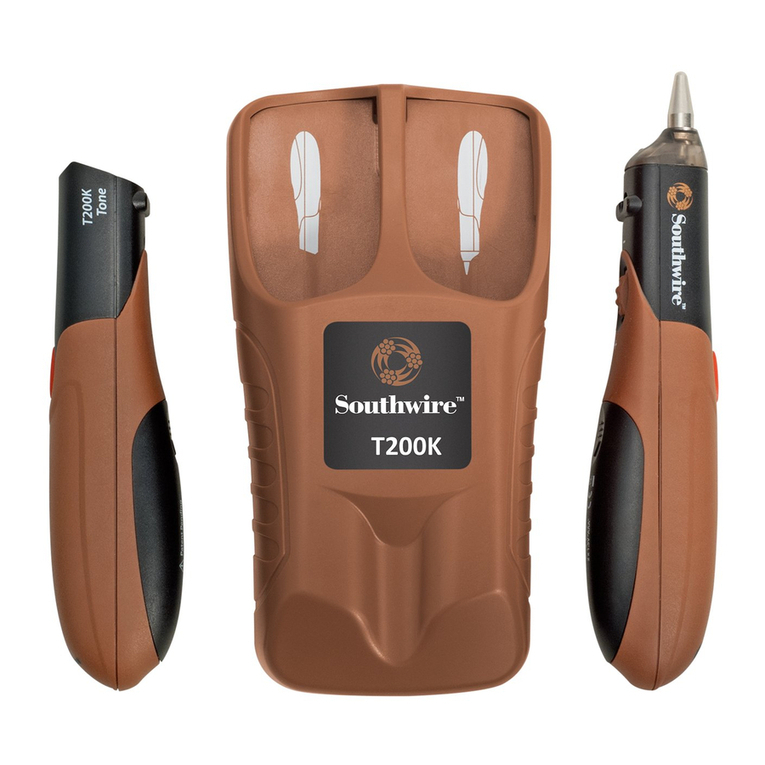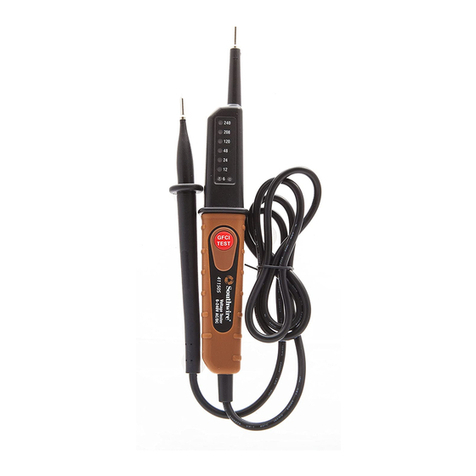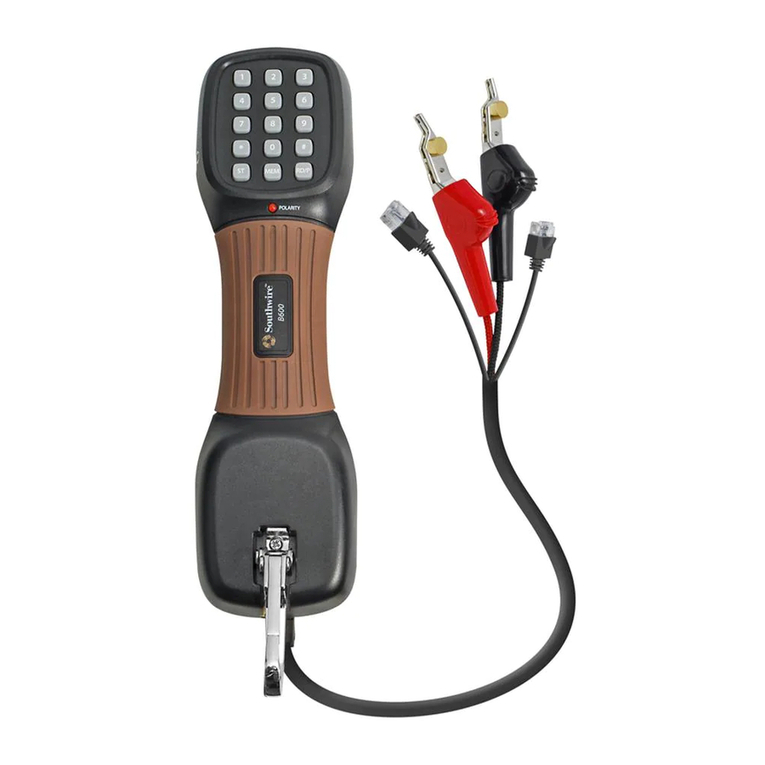
15 16
Register YourVoltage Tester
-
on Register Product to register your product.
REGISTER YOUR PRODUCT
Register your product purchase at www.southwiretools.com. At
Southwire, we provide you with the best customer experience. Simply
provide your model number, serial number, and just a few pieces of
information about yourself - it is that quick and easy.
“third hand”. This allows you to hold one test lead and the multimeter in
one hand while you touch measurement points with the other test lead.
Test Lead Storage
For technical questions related to your multimeter or information on how to
purchase fuses or Southwire accessories, contact Southwire Customer
Service at 1-855-SW-TOOLS
Customer Service
LIMITED WARRANTY AND LIMITATION OF LIABILITY ON
SOUTHWIRE METERS & TESTERS
Southwire Company, LLC
Attention: ToolWarranty Return
840 Old Bremen Road
Carrollton, GA 30117
Southwire Company, LLC warrants this product to be free fromdefects in
material and workmanship forfive years from the date of purchase. This
warranty does not coverfuses, disposable batteries, ordamage arising from an
accident, neglect, misapplication, contamination,modification, improper
maintenance or repair, operation outside of specifications, orabnormal
repair or replacement of the product. Whether Southwire repairs or replaces the
product will be a determinationthat Southwire makes at itssole discretion.
relating to this product, and no such reseller warranty will be binding on
Southwire. If you have a warranty claim, orif the product needs to be serviced
during or afterthe warranty period set forth above, please contact the
Customer Service Department at 855-SWTOOLS (855-798-6657). The sender
is responsible forall shipping, freight, insurance, and packaging costs
associated with sending a product to Southwire. Southwire will not be
responsible forlost ordamaged products returned pursuant to this warranty.
All products returned to Southwire underthis warranty should be mailed to:












